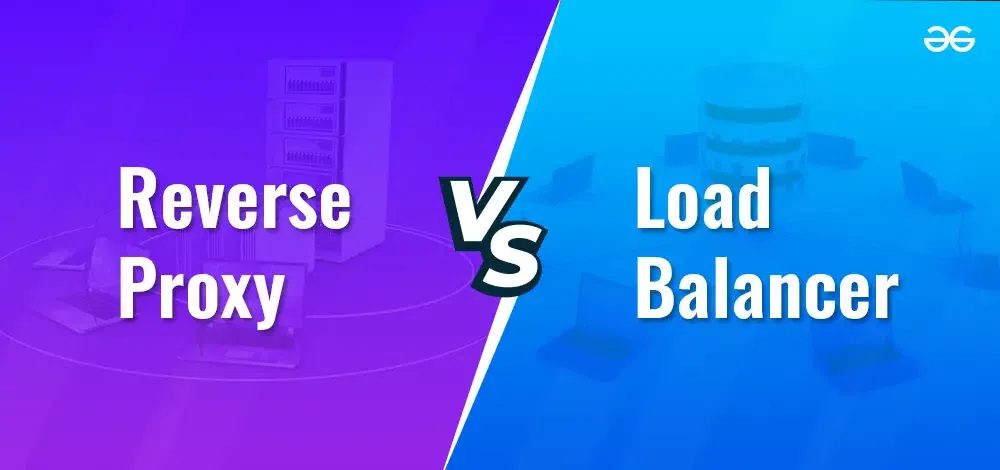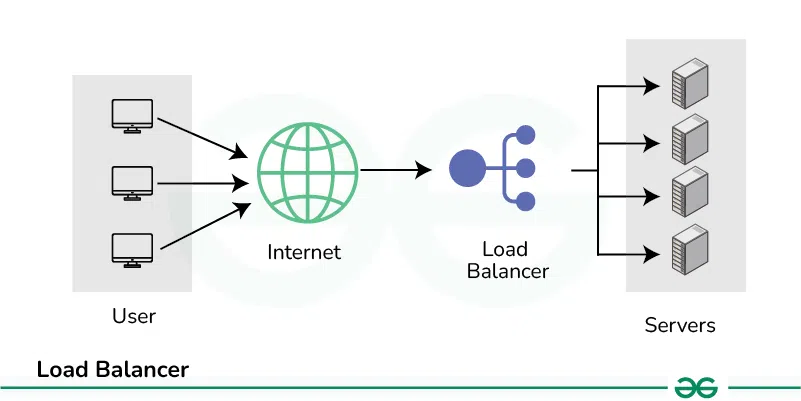Reverse Proxy Vs. Load Balancer
Last Updated :
19 Feb, 2024
In the realm of system design, confusion often arises regarding the distinct roles of reverse proxies and load balancers. Despite their critical importance in managing and optimizing web traffic, these components serve unique purposes and possess different functionalities. In this article, we will delve into the differences between reverse proxies and load balancers, demonstrating their roles and contributions in achieving performance, security, and scalability of web applications

Important Topics for the Reverse Proxy Vs. Load Balancer
What is Reverse Proxy?

A reverse proxy is a server that sits between client devices and backend servers, acting as an intermediary for requests from clients. When a client sends a request for a resource, such as a web page or an application, the reverse proxy receives the request on behalf of the backend servers. It then forwards the request to the appropriate backend server based on predefined rules or configurations.
- One of the key functions of a reverse proxy is to enhance security by serving as a barrier between the internet and backend servers. It can filter out malicious traffic, such as hacking attempts or spam, before it reaches the servers, thus protecting them from direct exposure to potential threats.
- Additionally, a reverse proxy can improve the performance of web applications by caching static content, such as images, CSS files, and JavaScript.
- By storing copies of frequently accessed content, the reverse proxy can serve these resources quickly to clients without needing to request them from the backend servers every time.
- This reduces latency and server load, improving overall performance for users.

A load balancer is a networking device or software application that distributes and balances the incoming traffic among the servers to provide high availability, efficient utilization of servers, and high performance.
- Load balancers are highly used in cloud computing domains, data centers, and large-scale web applications where traffic flow needs to be managed.
- The primary goal of using a load balancer is, not to overburden with huge incoming traffic which may lead to server crashes or high latency.
What are the differences between Reverse Proxy and Load Balancer?
Below are the differences between a reverse proxy and a load balancer:
| Feature |
Reverse Proxy |
Load Balancer |
| Functionality |
Acts as an intermediary between clients and servers, handling requests and responses. It can also provide caching, SSL termination, and security features. |
Distributes incoming traffic across multiple backend servers to improve performance, scalability, and reliability. It can also perform health checks on servers. |
| Use Case |
Enhances web application security, performance, and scalability. Often used for content caching, load balancing, and protecting servers from direct exposure. |
Ensures high availability, fault tolerance, and scalability of web applications, APIs, and services with high traffic volume. |
| Handling Requests |
Receives client requests, forwards them to the appropriate backend server, and returns responses to clients. |
Distributes incoming requests among a pool of backend servers based on predefined algorithms (e.g., round-robin, least connections). |
| Caching |
Can cache static and dynamic content to reduce latency and server load, improving overall performance. |
Typically does not perform caching, as its primary focus is on load distribution and ensuring server availability. |
| SSL Termination |
Handles SSL/TLS encryption and decryption, offloading this task from backend servers and improving performance. |
Can also perform SSL termination, reducing the computational overhead on backend servers and enhancing security by centrally managing certificates. |
| Security Features |
Provides security features such as access control, rate limiting, and protection against DDoS attacks. |
Offers basic security features like IP whitelisting and firewall rules, but may not be as robust as dedicated security solutions. |
| Deployment |
Often deployed in front of web servers or application servers to improve performance and security. |
Typically deployed in a network between clients and servers, ensuring that requests are evenly distributed and servers are not overloaded. |
| Examples |
Apache HTTP Server, HAProxy |
HAProxy, AWS Elastic Load Balancing, F5 BIG-IP |
Best Scenarios for Reverse Proxy and Load Balancer

Conclusion
In conclusion, reverse proxies focus on enhancing security, performance, and scalability by managing client requests and interactions with backend servers. They offer features like caching and SSL termination. Load balancers ensure high availability and scalability by evenly distributing incoming traffic across multiple servers. Both are crucial in modern web environments, often working together to handle web traffic efficiently and enhance application performance.
Share your thoughts in the comments
Please Login to comment...